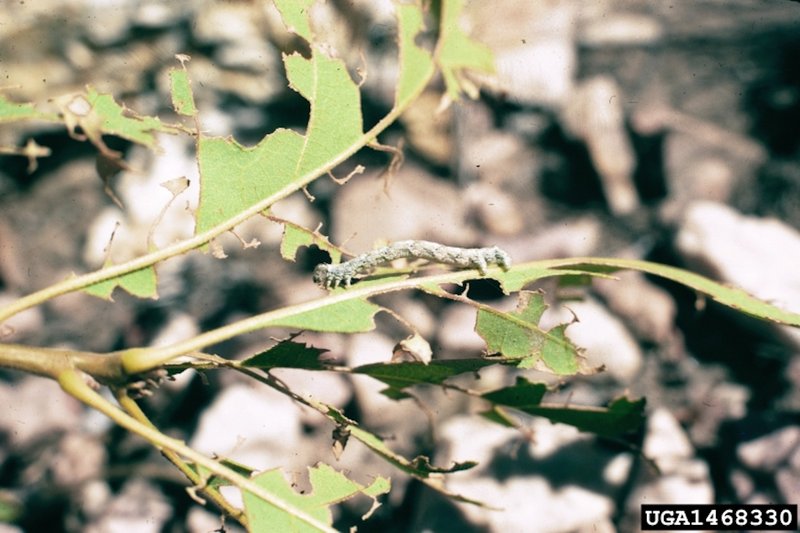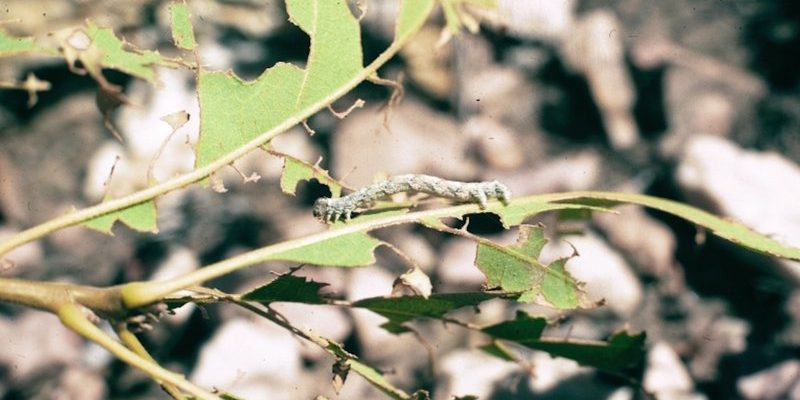
Inchworms, often called “loopers” due to their unique way of moving, can certainly catch your attention. But are they friends or foes in the garden? Here’s the thing: understanding whether they’re harmful or not is key to deciding your next steps. Let’s dive in and explore the world of inchworms, their habits, and their impact on your garden.
What Are Inchworms?
Inchworms aren’t actually worms—they’re the larvae of various moth species, with the most common ones belonging to the Geometridae family. Imagine them as the teenage version of moths, still growing and finding their place in the world. These little guys can be green, brown, or even a mix of colors, allowing them to blend in seamlessly with leaves. Their unique inching movement is a sight to behold; they draw their bodies into a loop and then stretch out again, giving them their nickname.
You might be wondering how they got into your garden. Well, they often come from nearby trees and shrubs, especially when these plants are near your garden. When the conditions are just right, they can make their way into flower beds or vegetable patches in search of tasty foliage.
How Do Inchworms Affect Plants?
Inchworms primarily feed on leaves, and their diet can include a variety of plants, from shrubs to vegetables. This feeding can lead to noticeable damage: holes in leaves, defoliation, and sometimes stunted plant growth. For gardeners, this is where the concern begins. If you’re nurturing delicate seedlings or flowering plants, the last thing you want is for these insects to munch away on them.
However, before you panic, it’s worth noting that not all inchworm species are equally destructive. Some might nibble on foliage without causing significant harm, while others can be quite voracious. It’s essential to identify which type you’re dealing with before taking action.
So, what are the signs to look for? Keep an eye out for:
- Chewed leaves or missing foliage
- Small, web-like structures, including silk threads
- Inchworms themselves, hanging from leaves or crawling along stems
Identifying Inchworm Species
With many species of inchworms out there, it can feel like a science project identifying which ones are in your garden. Some common types include the cabbage looper and the eastern tent caterpillar. Each has its own specific characteristics and feeding habits, which affect how they interact with your plants.
For instance, cabbage loopers are green and tend to prefer cruciferous vegetables like broccoli and kale, often leaving them looking ragged. On the other hand, eastern tent caterpillars create noticeable silk tents in the trees they inhabit. Wouldn’t it be nice if all inchworms wore name tags?
To effectively manage them, you might want to snap a quick photo and do some research or consult your local extension office for assistance. This approach can help you determine the best way to handle the situation.
Are Inchworms Dangerous to Your Plants?
This is the million-dollar question. The answer is: it depends. Some gardeners might find that a small number of inchworms won’t significantly impact their plants, while others may experience more severe damage. It’s a bit like that one friend who borrows your favorite sweater and returns it with a tiny stain—it might not ruin the whole garment, but it’s still annoying.
If you’re dealing with a minor infestation, you can often remove inchworms by hand. Wearing gloves, you can pluck them off your plants and relocate them elsewhere. If the problem escalates, you might need to employ organic pesticides or insecticidal soaps, which can often be effective without harming beneficial insects.
The key is monitoring your plants closely. Keeping an eye on your garden can help you catch any potential issues before they become major problems.
Natural Predators of Inchworms
Believe it or not, you’ve got help in your garden when it comes to managing inchworm populations! Various natural predators, such as birds, wasps, and even other insects, feast on inchworms. This is Mother Nature’s way of keeping the ecosystem balanced, and as a gardener, it’s something you should encourage.
Attracting these helpful creatures can be as simple as planting flowers that produce nectar, providing shelter, or creating a habitat where they feel safe. When you foster an environment that attracts beneficial wildlife, you’re not just giving your garden a fighting chance against pests, but you’re also creating a vibrant ecosystem right at home.
You might want to consider installing birdhouses or keeping your garden free of chemicals to make it inviting for these natural allies. Think of it as throwing a party for all the good guys!
Preventive Measures for Future Infestations
After handling a potential inchworm issue, you probably want to prevent any future visits. Prevention is always easier than dealing with an infestation! Here are a few measures to consider:
- Regular Inspections: Check your plants frequently for any signs of inchworms or other pests. Early detection can make a world of difference.
- Companion Planting: Certain plants can deter inchworms, so consider adding beneficial plants to your garden mix.
- Physical Barriers: Using row covers can provide a protective layer that keeps inchworms and other pests away from your plants.
Getting into the habit of maintaining your garden and being proactive can help keep it thriving and healthy in the long run!
So, are inchworms harmful to garden plants? The answer is nuanced. While they can pose a threat to your beloved foliage, understanding their role and being proactive can help you manage their presence effectively.
Whether you choose to embrace natural predators, employ hand-picking techniques, or utilize organic pest control, the goal is to maintain a balanced and thriving garden. Remember, every little creature has its place in the ecosystem, even the inchworms. By taking the time to understand and manage them, you can ensure your garden remains a lush and vibrant sanctuary for both plants and wildlife. Happy gardening!

